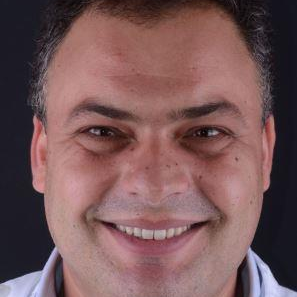New Techniques, Materials and Technologies in Dentistry: Second Edition
A special issue of Applied Sciences (ISSN 2076-3417). This special issue belongs to the section "Applied Dentistry and Oral Sciences".
Deadline for manuscript submissions: 18 January 2025 | Viewed by 2607
Special Issue Editors
Interests: dentistry; clinical teaching; innovation in teaching; public health; clinical research
Special Issues, Collections and Topics in MDPI journals
Interests: periodontal disease; periodontal surgery; dental implants; biomaterials and bone regeneration; epidemiology
Special Issues, Collections and Topics in MDPI journals
Interests: adhesion; minimal invasive dentistry; dental materials; dental bleaching; aesthetics; computer-assisted design and manufacturing
Special Issues, Collections and Topics in MDPI journals
Special Issue Information
Dear Colleagues,
Dentistry has experienced significant technical and technological advancements in recent years. These achievements have made it possible to increase the accuracy of diagnosis, plan treatments more precisely, improve the predictability and durability of certain treatments, make procedures safer and faster, and improve the patient experience and acceptance, among others.
Given the rate at which these advancements are unfolding, it is only imperative to launch a Special Issue that provides a platform for clinicians to share their insights and research, as well as help them to be aware of the latest breakthroughs in this field. Topics in this Special Issue include, but are not limited to, the following: new restorative materials, new regenerative materials, new surgical techniques, CAD-CAM systems, artificial intelligence in dentistry, robotics, and translational research. We encourage submissions of original in vivo or in vitro studies that describe new therapeutic approaches or materials, as well as reviews, from different fields of dentistry and related areas.
Prof. Dr. José João Mendes
Prof. Dr. Ricardo Castro Alves
Dr. Ana Cristina Mano Azul
Guest Editors
Manuscript Submission Information
Manuscripts should be submitted online at www.mdpi.com by registering and logging in to this website. Once you are registered, click here to go to the submission form. Manuscripts can be submitted until the deadline. All submissions that pass pre-check are peer-reviewed. Accepted papers will be published continuously in the journal (as soon as accepted) and will be listed together on the special issue website. Research articles, review articles as well as short communications are invited. For planned papers, a title and short abstract (about 100 words) can be sent to the Editorial Office for announcement on this website.
Submitted manuscripts should not have been published previously, nor be under consideration for publication elsewhere (except conference proceedings papers). All manuscripts are thoroughly refereed through a single-blind peer-review process. A guide for authors and other relevant information for submission of manuscripts is available on the Instructions for Authors page. Applied Sciences is an international peer-reviewed open access semimonthly journal published by MDPI.
Please visit the Instructions for Authors page before submitting a manuscript. The Article Processing Charge (APC) for publication in this open access journal is 2400 CHF (Swiss Francs). Submitted papers should be well formatted and use good English. Authors may use MDPI's English editing service prior to publication or during author revisions.
Keywords
- oral health
- dentistry
- dental materials
- biomaterials
- dental imaging
- digital dentistry
- artificial intelligence
- new technologies
- personalized medicine







